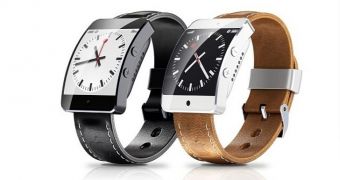A filing with the Securities and Exchange Commission made by Liquidmetal Technologies Inc. reveals that Apple continues to seek the use of the amorphous metal alloys developed by the former by extending their licensing agreement until February 2015.
Apple could be on the cusp of finally selling a product encased in Liquidmetal. According to a filing with the SEC, “On May 19, 2014, Liquidmetal Technologies, Inc. (the ‘Company’) and Apple Inc. (‘Apple’) entered into an second amendment (the ‘Second Amendment’) to the Master Transaction Agreement that was originally entered into on August 5, 2010 (the ‘MTA’) and amended on June 15, 2012 (the ‘First Amendment’).
The filing continues, stating, “Under the MTA and the First Amendment, the Company was obligated to contribute to Crucible Intellectual Property, LLC, a special purpose subsidiary of the Company, all intellectual property acquired or developed by the Company from August 5, 2010 through February 5, 2014, and all intellectual property held by Crucible Intellectual Property, LLC was exclusively licensed on a perpetual basis to Apple for the field of use of consumer electronic products under the MTA.”
The amended agreement grants Apple rights to use Liquidmetal until February 5, 2015, although the company has yet to introduce any major Liquidmetal applications to date.
One contender to the honor of having a Liquidmetal enclosure is, of course, the iPhone. The exotic material is known to be extremely durable and scratch-resistant, and it can even be “tattooed” with various colors and markings, allowing Apple to reduce seams that would otherwise only be there for design purposes (such as the dark stripes found around the sides of its iPhone 5).
Other advantages are the weight-to-strength ratio. Far more resistant than aluminum though not much heavier, Liquidmetal would make a terrific replacement not just for iPhone cases but also for MacBook enclosures.
Under the extended agreement, Apple is likely to develop its first Liquidmetal-encased product. Depending on the success of this approach, the two parties would eventually extend the licensing. So far, the Mac maker seems cautious not to pay unnecessary royalties.
Basically it is just buying itself time to decide if Liquidmetal should be used at large or not. After all, it’s not the only material that promises to revolutionize the world as we know it. Graphene is also a blip on Apple’s radar, as is sapphire.
The rumored iWatch could also have a Liquidmetal-crafted body. It makes sense for the company to use the material on a device prone to wear and tear, as traditional watch wearers will agree.

 14 DAY TRIAL //
14 DAY TRIAL //